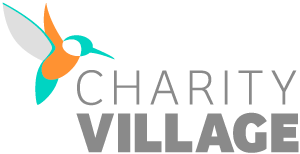This article was previously published by CareerWise and is reprinted with permission.
The swift advances in artificial intelligence (AI) have caught the world’s attention for their potential to enable more efficient task completion. This was certainly the case when tech startup OpenAI released their AI chatbot ChatGPT for public testing in November 2022. OpenAI’s product lineup continues with GPT-4, their latest cutting-edge language software.
ChatGPT has been a common water cooler topic in the University of Alberta’s Career Centre office, and I was interested in taking part in further research on the chatbot. I wanted to see if ChatGPT could write a resume and cover letter to apply for my position as a Career Peer Educator. Here is how the chatbot responded to my requests and what I learned about using ChatGPT to create job search documents.
Putting ChatGPT to the test
From this test, I was able to get a good idea of how ChatGPT would approach this task. The items listed in both responses are what an employer would typically hope to see on these documents. However, it does not go further than that.


I started by asking ChatGPT if it could write a resume and cover letter for a job application. The chatbot then asked me to provide contact information, as well as personal skills and qualifications for the job.
ChatGPT also asked me to provide information about the job I was applying to, including the job posting. This indicated to me that it would perform a degree of targeting the documents to the position. Targeting is a common but effective process used extensively in advising sessions for clients at the Career Centre.
I provided the information it asked for. I answered all of its questions, filled in some basic information about the position and gave general details about my skills. In response, the chatbot produced a resume and cover letter, but it did not stick the landing.
Limitations and words of caution
Voice: A resume and cover letter are an employer’s introduction to an applicant. Therefore, it should give a good first impression by showcasing some of their personal voice and approach to work. The chatbot’s writing noticeably lacks any unique personality. I was not impressed with the text I received from ChatGPT. There was no intention or rationale to how the ideas were organized, which gave off the feeling of generalized documents from an assembly line.
For any prospective employee whose position involves a significant amount of written communication, it would not be advisable to cut corners by using AI to draft their documents. This is because application documents are a sample of their writing, and someone applying for communication-intensive roles would not want to give the wrong impression.
“There was no intention or rationale to how the ideas were organized, which gave off the feeling of generalized documents from an assembly line.”
Accuracy: An AI chatbot cannot understand context or create details or specificity without being prompted and may not be completely factual. ChatGPT can only output responses based on what it already knows in its language model or what the user inputs. Beyond listing out their skills and attributes, a candidate should include how those were attained with specific details from their past experiences. These limitations could be avoided by researching the position and organization, editing and proofreading your own writing, as well as meeting with a human career advisor.
Ethics: Specific use of ChatGPT in a professional setting is still an ethical grey area. In fact, Microsoft’s AI-enabled Bing search engine refused to write a cover letter due to its own ethical concerns. Nonetheless, the best practice would be for a user to disclose when AI has been used in their work.
Privacy: Another important factor is that AI and chatbots are learning from any personal information we provide. It is dangerously unclear how much personal data is being collected and what they may intend to do with it. Recently, the Office of the Privacy Commissioner of Canada announced a joint investigation of OpenAI with the privacy authorities of Alberta, British Columbia and Quebec. European Union privacy regulators have also been investigating the company. Until there are further inquiries and regulations on ChatGPT and other large language models, it would not be recommended to disclose personal information to this technology.
A supplementary tool for jobseekers
There could be ways to use ChatGPT alongside other programs such as CoverQuick, which is an AI-powered job application assistant. A user could simply prompt ChatGPT to generate a resume and cover letter, then insert the text into CoverQuick’s templates. Users could also revise the text from ChatGPT themselves to ensure that it does not feel generalized and their own voice comes across.
It is up to the individual to determine whether use of these tools would be more worthwhile than starting from scratch with some ideas about content and formatting. AI technology could be useful for those who have more difficulty with writing, if English is not their first language or if they are unfamiliar with formatting documents for job applications.
Potential adjustments to the job market
As the use of AI becomes more prevalent, there could be potential changes to job postings and the way that employers use AI in a more aware and responsible way.
For job applications, employers may add AI-detection programs alongside automated tracking systems (ATS). This may hasten the phasing out of cover letters completely, given that applicants are not always submitting them even when they are required, and instead of reading cover letters employers turn toward social media apps like LinkedIn to learn more about applicants. As a result, there could be more emphasis put on job interviews in determining one’s competencies and soft skills, where the candidate is evaluated in a more controlled environment. Other alternatives could include simulated assessments in a closed environment that examine a person’s occupational and technical skills.
Some employers have been finding ways to use AI in a more aware and responsible way to aid in hiring. I attended a webinar by the U.S.-based organization Modern Hire, hosted by Eric Sydell and Matt Goff. They covered the emergence of responsible use of AI in detail and a return to quality of hire. As AI becomes more regulated, technologies can scale up their tasks to increase efficiency and effectiveness with practical and fair human oversight.
If AI is here to stay, it must be used responsibly by job applicants, employees and employers alike. We are in uncharted technological waters that must be navigated carefully. While it may be easy enough to increase efficiency with these programs, the human element of work and ethical quandaries need to be considered.







